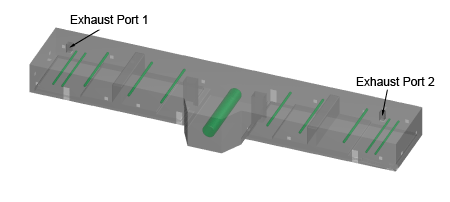Ventilation Design

There are many purposes of ventilation systems, but they all involve either safety or comfort of humans. When it comes to plant safety, however, it can really pay off to design a system correctly.
- Are certain areas of the plant extremely hot? Are they potential safety risks to maintenance personnel either during outages or during normal operation?
- Need to know the effects of a chemical release in your facility? How will the release spread over time? What areas will be most concentrated? How can you ventilate and monitor areas to ensure safety of personnel?
Airflow Sciences Corporation can deliver answers to these questions and let you know how much ventilation is required to clear the scene for safe entry.
Performing inspections or maintenance at industrial facilities often involves entering confined spaces where chemical releases may have occurred. Buildings that are normally clear of hazardous chemicals can experience unexpected releases from storage vessels that can cause health concerns.

Flow modeling is a technique that can be used to analyze such events and design ventilation systems or action plans to avoid injury. Both CFD modeling and physical testing techniques are often employed for such designs.
Shown is an enclosure at a boiler ("the penthouse") where welding and other repairs are common during outages. This is also an area where chemical releases are possible (when nitrogen purging tubebanks). To design an adequate ventilation system, CFD simulations were performed to predict hazardous concentrations within the area during the initial venting. The time-dependent flow model results indicate areas where oxygen levels are safe for humans (clear regions), or where oxygen deficient zones exist (colored regions). Blue/black areas are on the threshold of compliance, while yellow/red zones have little oxygen present. Safe entry is attained after venting 17 minutes using two exhaust fans.
